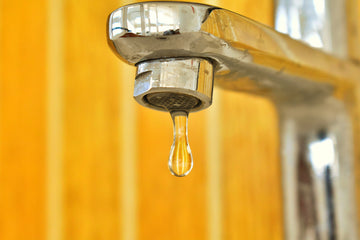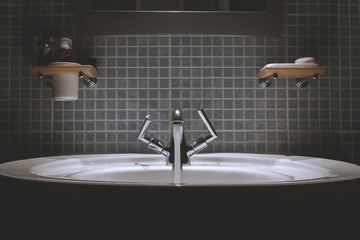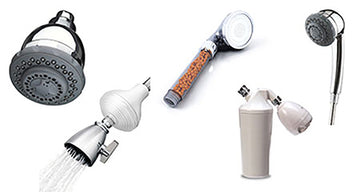
If you are recently renovating a new home or having plans to replace your faucet or shower head/shower system, you will undoubtedly have seen numerous showerheads, sink faucets, toilets labeled as low flow, with added claims of reducing water. But to be honest, do you actually know what low flow means?
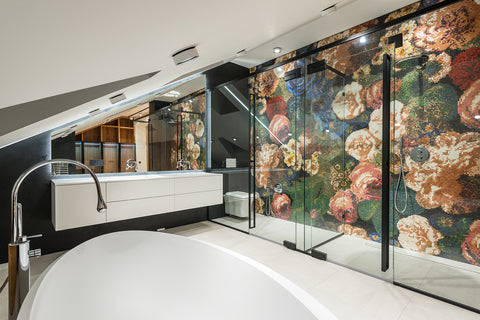
What's The Definition Of Low-Flow?
The term “low-flow” is denoting a toilet, faucet, shower head, or other plumbing fixture that is designed to use or dispense less water than a conventional model.The EPA sets high standards for determining what qualifies as a low-flow faucet or fixture, and only if the product meets strict water-reduction standards during testing can it earn the EPA's WaterSense label. To match up the definition of Low-Flow, the individual models must meet the following criteria:
- A low-flow showerhead must not exceed a maximum of 2.5 gallons per minute (GPM) water flow.
- A low-flow sink faucet must not exceed a maximum of 1.5 GPM.
- A low-flow toilet must use no more than 1.5 gallons per flush (GPF).
Low-Flow doesn’t mean low-pressure for a lower quality experience
Since 1992, in the interest of efficiency and cost savings, U.S. law has required showerheads to flow no more than 2.5 gallons (9.4 liters) per minute. However, due to underdeveloped technology in the beginning, some traditional old-fashioned showerheads have the potential to cause low water pressure resulting in a poor showering experience. So some folks associate low-flow showerheads with poor water pressure and wimpy, unsatisfying showers.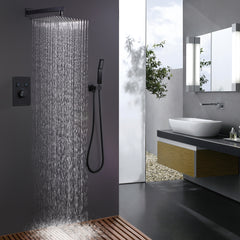
While a reduction in water is inevitable—that’s the purpose of low-flow. Anyway, you might be surprised to discover that many low-flow showerheads can bring quite an invigorating blast. There are two main types of water-saving showerheads, aerating and laminar, that produce satisfying (and somewhat different) showers while reducing water waste.
- Aerating: An aerating showerhead works by forcing water through small holes in a screen, which adds air to the water and produces a fine but vigorous spray. While this reduces the overall amount of water the showerhead emits, it increases the pressure of the individual water streams. An aerating showerhead produces a truly invigorating spray, often compared to “needles” of water, and will also create an especially steamy shower. Because air is mixed into the water, however, it lowers water temperature slightly, so you may find yourself using more hot water to maintain your comfort level.
- Laminar: Defined as a “constant streams of non-turbulent water,” laminar technology doesn’t mix air into the water stream, so you won’t get the sharp “needles” of an aerating head. Instead, laminar showerheads and faucets distribute the water into larger individual streams, and they often come with an adjustable feature that allows the user to select a gentle spray or a robust massaging action. Laminar technology is also used in overhead rain-type showerheads for a gentle soaking that many people find soothing. This type of showerhead will not produce as much steam as an aerating model—a plus for poorly ventilated bathrooms, as excess steam can damage paint, wallboard, and cabinets.
Low-Flow Faucets Deserve More Concern
Compared to showerheads, the U.S. government's flow control for faucets is not as strict. The current federal standard faucet flow rate is 2.2 GPM, and the flow rate of low-flow faucets is no more than 1.5 GPM, and the public has not paid much attention to low-flow faucets yet.
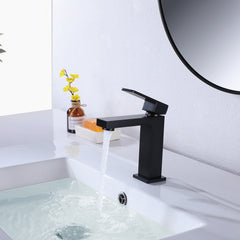
A high-efficiency bathroom sink faucet flowing at 1.5 gpm can reduce flow rate by 32 percent over a traditional faucet with a maximum flow rate of 2.2 gpm.
Retrofit studies conducted in Seattle, Washington, and East Bay Municipal Utility District in California have shown that a household can save approximately 570 gallons per year by simply replacing existing bathroom sink faucet aerators with high-efficiency 1.5 gpm aerators.
The Benefits Of Going Low-Flow

Low flow showerheads can decrease water consumption by 40% or more! So do the faucets! This not only conserves water, but it cuts down on your monthly water bill providing significant end-of-year savings. Showers take energy to heat the water, thus cutting down on water usage also cuts down on energy usage. It also cuts down on carbon dioxide emissions. Since the demand for hot water is lessened, the amount of energy used is lower and results in lower CO2 dispersed into the air.
It's very worthwhile to be happy cause this is a double-whammy in that you’re saving energy and money at the same time–and who doesn’t love that kind of win-win?
So let's take action to conserve water and save money by picking and installing good, suitable low-flow faucets and showerheads!


